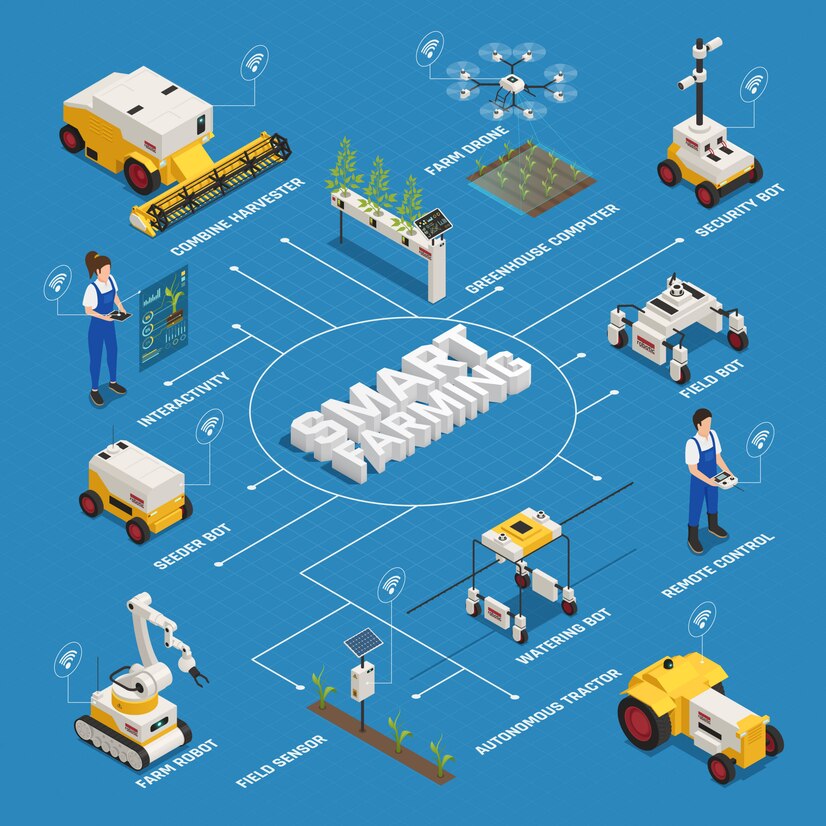Introduction:*
Technology is revolutionizing every aspect of modern agriculture, including supply chain management. In the face of evolving challenges such as climate change, market volatility, and global pandemics, leveraging technology becomes imperative for building resilience in agricultural supply chains. This blog post explores the pivotal role of technology in enhancing the resilience of agricultural supply chains and highlights key technological solutions driving this transformation.
1. Advanced Forecasting and Planning Systems:
Technology enables the development and implementation of advanced forecasting and planning systems that enhance the resilience of agricultural supply chains. These systems utilize data analytics, machine learning, and artificial intelligence to predict demand patterns, optimize production schedules, and mitigate the impact of disruptions. By accurately forecasting market trends and potential risks, farmers and suppliers can make informed decisions to adapt their operations and ensure continuity of supply.
2. Blockchain and IoT for Traceability and Transparency:
Blockchain technology and the Internet of Things (IoT) offer unprecedented opportunities to enhance traceability and transparency in agricultural supply chains. By recording every transaction and movement of goods on a decentralized ledger, blockchain enables stakeholders to trace the origin of products, verify their authenticity, and ensure compliance with regulations. IoT devices such as sensors and RFID tags provide real-time monitoring of temperature, humidity, and other environmental conditions, enabling proactive management of quality and safety throughout the supply chain. By increasing visibility and accountability, blockchain and IoT solutions strengthen the resilience of agricultural supply chains against counterfeit products, contamination, and other risks.
3. Precision Agriculture and Smart Farming Practices:
Technology-driven precision agriculture and smart farming practices optimize resource use, minimize waste, and enhance productivity, thereby improving the resilience of agricultural supply chains. Remote sensing technologies, drones, and satellite imagery enable farmers to monitor crop health, detect pest infestations, and assess environmental conditions with unprecedented accuracy. Automated machinery and robotic systems streamline planting, harvesting, and processing operations, reducing labor costs and increasing efficiency. By optimizing inputs and maximizing yields, precision agriculture practices mitigate the impact of external shocks such as fluctuating input prices and labor shortages, ensuring the stability and sustainability of agricultural production.
4. Digital Marketplaces and E-Commerce Platforms:
Digital marketplaces and e-commerce platforms connect farmers directly with consumers, bypassing traditional intermediaries and enhancing the resilience of agricultural supply chains. These platforms enable farmers to reach a broader market, reduce dependence on physical distribution channels, and respond quickly to changing consumer preferences. By eliminating geographical barriers and facilitating direct transactions, digital marketplaces empower farmers to diversify their customer base and adapt to market fluctuations more effectively. Moreover, e-commerce platforms provide consumers with greater access to fresh, locally sourced products, fostering resilience in local food systems and reducing reliance on centralized distribution networks.
Conclusion:
Technology is a powerful enabler of resilience in agricultural supply chains, offering innovative solutions to address complex challenges and unlock new opportunities. By leveraging advanced forecasting and planning systems, blockchain and IoT technologies, precision agriculture practices, and digital marketplaces, stakeholders can enhance the resilience of agricultural supply chains and ensure the stability and sustainability of food production and distribution systems. Embracing technology-driven solutions is essential for navigating the uncertainties of the modern agricultural landscape and building a more resilient future for the industry
